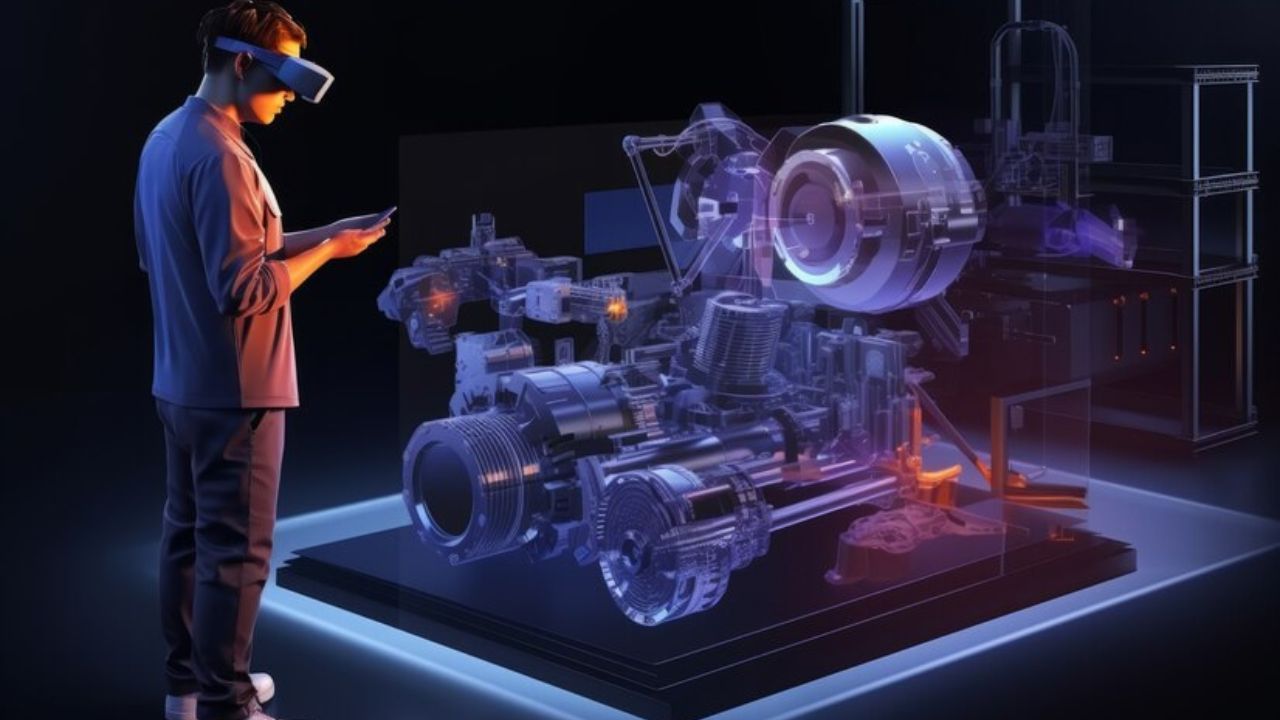BLOG
LPPoA Incorporation Documents: A Quick Guide

Starting a Limited Liability Partnership of Attorneys (LPPoA) can seem overwhelming at first, especially when it comes to wading through the necessary paperwork and legal jargon. To transform this daunting task into an achievable goal, we’ve crafted a user-friendly guide that will help aspiring legal entrepreneurs get their LPPoA off the ground efficiently and effectively. Throughout this post, we’ll explore the key incorporation documents required for an LPPoA, offering straightforward explanations and practical tips to aid your understanding. Whether you’re a seasoned attorney or a budding legal professional, this guide is tailored to meet your needs, providing clarity on a complex subject.
Understanding the Basics of LPPoA Incorporation Documents
The foundation of any LPPoA Incorporation Documents lies in understanding what it stands for. Unlike traditional law firms, which are often structured as partnerships or corporations, an LPPoA Incorporation Documents combines the benefits of both. It offers the flexibility of a partnership with the liability protections of a corporation, making it an appealing choice for attorneys looking to pool resources while protecting individual assets.
To establish an LPPoA Incorporation Documents, you’ll need to focus on several key documents. These documents serve as the backbone of your firm and outline everything from operational procedures to financial responsibilities. Gathering these documents requires attention to detail, but with the right approach, you can streamline the process and set your LPPoA up for success.
By familiarizing yourself with the necessary paperwork, you can avoid common pitfalls and ensure your business adheres to all legal requirements. Let’s break down each essential document and its role in forming a successful LPPoA.
Articles of Incorporation
Every LPPoA begins with the Articles of Incorporation. This critical document officially registers your LPPoA with the state and establishes its legal identity. Think of it as the birth certificate for your firm, detailing important information about your business, such as its name, purpose, and structure.
When drafting the Articles of Incorporation, clarity is key. Clearly outline the services your LPPoA will provide, the initial capital investments, and the management structure. Engaging a legal expert to review this document can help prevent errors that might lead to delays or complications down the line.
Additionally, it’s crucial to research your state’s specific requirements for incorporation, as these can vary. Some states may require additional information, such as the names and addresses of all partners involved. Ensuring your Articles of Incorporation are comprehensive and compliant will pave the way for a smooth registration process.
Partnership Agreement
The Partnership Agreement is arguably one of the most vital documents in creating an LPPoA. It defines the relationship between partners, outlining roles, responsibilities, and profit-sharing arrangements. This document serves as the operational blueprint for your firm, ensuring all partners are on the same page.
Transparency and communication are essential when drafting a Partnership Agreement. All partners should have a clear understanding of their duties, decision-making powers, and the process for resolving disputes. Including clauses that address potential changes, such as the addition or departure of partners, will help future-proof your agreement.
It’s wise to engage in open discussions with your partners during this process, addressing each partner’s expectations and concerns. A well-crafted Partnership Agreement not only prevents misunderstandings but also fosters a collaborative environment within your LPPoA.
Operating Agreement
While similar to the Partnership Agreement, the Operating Agreement focuses more on the internal workings of your LPPoA rather than individual partner relationships. It covers topics like voting rights, meetings, and management procedures, providing a structured framework for day-to-day operations.
An effective Operating Agreement should encompass every aspect of your firm’s operations, from financial management to client onboarding. By establishing clear guidelines, you can ensure consistency and maintain the quality of service your clients expect.
This document also serves as a safeguard against potential disputes. By having predetermined procedures for decision-making and conflict resolution, your LPPoA can address challenges swiftly and fairly. Involving all partners in drafting the Operating Agreement helps create a sense of ownership and accountability.
Certificate of Registration
In addition to the Articles of Incorporation, your LPPoA must obtain a Certificate of Registration from the state’s attorney regulation office. This certificate verifies that your firm meets the necessary legal and ethical standards to practice law within that jurisdiction.
The application process for this certificate involves submitting your Articles of Incorporation, Partnership Agreement, and other relevant documents. Be prepared to pay registration fees and provide proof of insurance coverage, as these are typically required.
Once granted, the Certificate of Registration becomes a testament to your firm’s legitimacy, enhancing your credibility with clients and peers. Staying informed about renewal requirements will help maintain your firm’s good standing over time.
Tax Identification Number
Obtaining a Tax Identification Number (TIN) is a crucial step in establishing your LPPoA’s financial identity. This number is necessary for filing taxes, opening bank accounts, and handling payroll.
Applying for a TIN is a straightforward process that can be completed online through the IRS website. It’s essential to apply as soon as possible, as many financial operations hinge on having this number.
Ensuring accurate record-keeping and timely tax filings will help your LPPoA remain compliant with federal regulations. Consulting a tax professional can provide valuable insights and assistance in managing your firm’s finances effectively.
Business Licenses and Permits
Depending on your location, your LPPoA may require additional licenses or permits to operate legally. These can include general business licenses, zoning permits, and professional licenses specific to the legal industry.
Researching local regulations and consulting with local authorities will help you identify the necessary permits. Obtaining these licenses ensures your firm operates within the law, avoiding potential fines or legal issues.
Staying up to date with licensing requirements is essential. Renewals and updates may be needed periodically, so keeping track of deadlines and maintaining compliance should be a priority for your LPPoA.
Professional Liability Insurance
Protecting your LPPoA with professional liability insurance is a prudent step to safeguard against potential legal claims. This insurance, often referred to as malpractice insurance, provides coverage in cases of alleged negligence or misconduct.
Selecting an appropriate policy involves evaluating your firm’s specific risks and coverage needs. Consulting with an insurance broker can help you find a policy that aligns with your LPPoA’s requirements and budget.
Maintaining adequate coverage is not just a legal obligation; it’s also a demonstration of your firm’s commitment to ethical practice. Regularly reviewing your policy ensures it remains aligned with your firm’s evolving needs and risk profile.
Designating a Registered Agent
Designating a registered agent is a legal requirement for forming an LPPoA. This individual or entity is responsible for receiving official correspondence and legal documents on behalf of your firm.
Choosing a reliable registered agent is crucial, as missing important notices can lead to legal complications. Many firms opt to hire professional registered agent services to ensure timely and efficient handling of documents.
Clearly communicate the role and contact information of your registered agent to your partners and clients. Keeping this information up to date will help your LPPoA stay organized and responsive to legal obligations.
Filing Annual Reports
Once your LPPoA is established, filing annual reports becomes a routine obligation. These reports provide updated information about your firm’s structure, management, and financial status to state authorities.
Organized record-keeping and attention to detail are vital when preparing these reports. Missing deadlines or providing inaccurate information can result in penalties or even dissolution of your LPPoA.
Engage a dedicated team member or service provider to manage the preparation and filing of annual reports. This ensures compliance and allows your partners to focus on delivering exceptional legal services to your clients.
Maintaining Compliance
Maintaining compliance is an ongoing responsibility for any LPPoA. This involves adhering to ethical standards, staying informed about changing regulations, and fulfilling all legal obligations.
Implementing regular compliance checks and training sessions can help your firm stay ahead of potential issues. A proactive approach to compliance not only safeguards your firm’s reputation but also fosters trust with clients and partners.
By embedding compliance into your firm’s culture, you can create a positive and ethical work environment that attracts top talent and clients alike. Remember, a commitment to compliance is a commitment to long-term success.
Conclusion
Forming an LPPoA requires careful attention to detail and a thorough understanding of the necessary incorporation documents. By addressing each component thoughtfully and proactively, you can establish a strong foundation for your firm’s future. Whether you’re just starting out or looking to refine your understanding, this guide equips you with the knowledge to take confident steps towards building your legal practice. For further assistance or tailored support, consider consulting legal experts who specialize in LPPoA formation. With the right guidance, you’ll be well on your way to navigating the complex landscape of legal entrepreneurship.
BLOG
G40 1150 2JZGTE VVTi Spool: Achieving Peak Performance with the Right Turbo Setup

When it comes to automotive performance, few engines command the same respect as Toyota’s legendary 2JZ-GTE VVTi. Known for its robust design and ability to handle massive power boosts, it’s a favorite among tuners and enthusiasts alike. However, extracting peak performance requires precision, especially when choosing the right turbo setup. That’s where the G40 1150 turbocharger enters the picture.
This blog will take an in-depth look at how matching the G40 1150 2JZGTE VVTi Spool helps achieve exceptional spool characteristics, impressive horsepower, and real-world performance benefits. Whether you’re building a street beast or a track monster, this guide will help you optimize your turbo setup for maximum effectiveness.
Why the 2JZ-GTE VVTi Earns Its Legendary Status
Before we jump into turbo setups, it’s important to understand what makes the 2JZ-GTE VVTi engine so special. The 2JZ-GTE VVTi, an updated version of Toyota’s inline-six twin-turbocharged engine, is a mechanical masterpiece. These key features make it one of the most coveted powerplants in the tuner world:
- Closed-Deck Engine Block: Its closed-deck design allows it to handle tremendous amounts of boost without compromising integrity.
- Forged Crankshaft: Built to last, the crankshaft can handle over 1000 HP without modification.
- Variable Valve Timing (VVTi): Introduced in 1997, VVTi adds more control over intake cam timing, improving throttle response and low-end torque.
- High Aftermarket Support: From tuning software to performance parts, the 2JZ has exceptional aftermarket support.
These characteristics make the 2JZ-GTE VVTi an ideal candidate for high-performance turbo upgrades like the G40 1150.
What Is the G40 1150 Turbocharger?
The Garrett G40 1150 belongs to Garrett’s G-Series lineup, representing the latest in turbo technology. It’s built to deliver higher efficiency, faster spool, and better performance compared to earlier models. Here’s what you need to know about this turbo:
Key Specifications of the G40 1150
- Horsepower Rating: Supports up to 1150 HP, making it viable for both serious street builds and track applications.
- Compressor Wheel Size: Features a 58mm inducer, allowing for efficient airflow and high boost levels.
- Lightweight Design: Designed with lightweight materials for quicker spool times and reduced lag.
- Improved Aerodynamics: The G-series turbos use advanced aerodynamics to maximize power while keeping pressure ratios stable.
But why does the G40 1150 work so well with the 2JZ-GTE VVTi? The answer lies in its balance between airflow, spool capabilities, and reliability.
Matching the G40 1150 with the 2JZ-GTE VVTi
The synergy between the 2JZ-GTE VVTi engine’s versatility and the performance attributes of the G40 1150 turbo makes it a winning combination for enthusiasts. Below are the key factors to consider when matching these components.
1. Optimize Spool and Torque
One of the most common challenges in turbocharged setups is achieving a balance between spool time (how quickly the turbo reaches full boost) and top-end performance. Variable Valve Timing (VVTi) on the 2JZ makes it notably efficient at mitigating turbo lag, as it improves low-end torque. The G40 1150 enhances this advantage with its high-flow design, producing quick spool speeds without sacrificing power.
Example:
With the G40 1150 on a moderately built 2JZ-GTE engine, you can expect full spool as early as 3500 RPM—perfect for street and track applications alike.
2. Harnessing Mid-Range Power
The G40 1150 doesn’t just deliver on the top end; its flow efficiency maximizes mid-range power as well. Combined with the 2JZ’s inline-six configuration, this turbo proves ideal for drivers seeking both linear acceleration and explosive horsepower when needed.
3. Maximizing Top-End Horsepower
If you’re aiming for 1000+ horsepower on a 2JZ-GTE VVTi, the G40 1150 offers unmatched potential. It can deliver consistent and reliable high-boost levels, enabling you to dominate on drag strips or other high-speed challenges.
Essential Supporting Mods for G40 1150 + 2JZ-GTE VVTi Builds
While the G40 1150 is a powerhouse, achieving optimal performance depends on a well-balanced build. Here’s a list of critical modifications you’ll want to include:
- Fuel System Upgrades: To support the airflow provided by the G40 1150, upgrade to high-capacity injectors (1000cc or higher) and a reliable fuel pump (e.g., Walbro 525).
- ECU Tuning: Invest in standalone or piggyback ECUs like Haltech or AEM to precisely control fuel and boost levels.
- Exhaust System: Opt for a 3-inch or larger exhaust system to reduce backpressure and maximize turbo efficiency.
- Intercooler: Use a bar-and-plate intercooler to cool the charged air and increase reliability under high boost conditions.
- Forged Internal Components: If you’re targeting above 600 HP, forged pistons, rods, and upgraded head studs are a must.
Real-World Performance Results
To illustrate the potential of this turbo setup, let’s examine a real-world build:
- Vehicle: 1998 Toyota Supra
- Engine: Toyota 2JZ-GTE VVTi
- Turbo: G40 1150
- Supporting Mods: Upgraded fuel system, standalone ECU, 4-inch exhaust, oversized intercooler.
- Results: Achieved 950 WHP on E85 with a quick spool starting at 3700 RPM, delivering exceptional acceleration on both streets and drag strips.
This build highlights how pairing modern turbo technology with the legendary platform of the 2JZ can produce jaw-dropping performance.
Best Practices for Tuning and Maintenance
When implementing a G40 1150 turbo setup, proper tuning and maintenance are vital:
Tuning Tips:
- Boost Management: Use high-quality boost controllers to avoid exceeding safe levels of pressure.
- Fuel Map Optimization: Adjust fuel maps for smooth delivery and leaner mixtures at full throttle.
- Timing Adjustments: Reduce ignition timing wherever necessary to prevent detonation during high boost.
Maintenance Tips:
- Regularly inspect and replace spark plugs, oil filters, and fluids to ensure consistent performance.
- Monitor engine metrics like oil pressure, AFR (Air-Fuel Ratio), and boost levels using digital gauges.
- Stick to scheduled turbo servicing to extend its lifespan.
Is the G40 1150 the Right Turbo for You?
If you’re looking to turn your 2JZ-GTE VVTi setup into a high-performance machine that balances acceleration, mid-range power, and peak horsepower with quick spool times, the G40 1150 is an exceptional option. Whether you’re chasing street supremacy or track-day dominance, its innovative design ensures unmatched reliability and efficiency.
Final Note:
Turbo tuning is both an art and a science. To achieve peak results, working with an experienced tuner familiar with the nuances of the G40 1150 and the 2JZ-GTE VVTi platform is essential. Make your decisions wisely, and prepare to transform your ride into the ultimate performance vehicle.
BLOG
Adhesives technology miracle bond repair epoxy vs bondo

When it comes to repairing, restoring, or bonding surfaces, adhesives are often the unsung heroes. However, the effectiveness of your repair job heavily depends on choosing the right adhesive. Two popular options in the realm of repair and restoration products are Adhesives technology miracle bond repair epoxy vs bondo. Both are versatile and widely used, but each has unique features and ideal use cases.
Understanding which product fits your repair needs can save you both time and money. This in-depth comparison of Miracle Bond Repair Epoxy and Bondo will highlight their strengths, their differences, and the scenarios where each excels.
What is Adhesives technology miracle bond repair epoxy vs bondo?
Adhesives technology miracle bond repair epoxy vs bondo is a high-strength adhesive specially designed for bonding, filling, and repairing a wide variety of surfaces. Manufactured with advanced epoxy technology, it is lauded for its durability and versatility.
Key Features of Miracle Bond Repair Epoxy:
- Strong Bonding Strength: Offers exceptional adhesion on materials like concrete, wood, metal, ceramic, and plastics.
- Chemical Resistance: Its epoxy structure makes it resistant to moisture, chemicals, and weathering, making it suitable for outdoor use.
- Versatile Application: Works as an adhesive and gap filler, capable of handling large cracks or surface imperfections.
- Easy Mixing: Comes as a two-part epoxy that is mixed before application, ensuring controlled curing and strength.
- Durability: Once cured, it forms a tough, non-shrinking, permanent bond.
Common Applications:
- Concrete Repairs: Perfect for cracks in concrete walls, floors, or foundations.
- Wood Restorations: Excellent for patching or bonding wooden structures prone to wear and tear.
- Metal Bonding: Adheres metal pieces securely for industrial or automotive purposes.
- DIY and Professional Repairs: Great for advanced DIY enthusiasts and industries needing reliable adhesive solutions.
What is Bondo?
Bondo, a household name in repair products, has been around for decades. This polyester resin-based filler is primarily known for its effectiveness in automotive and wood repairs. It works as a putty, filling in gaps, cracks, or dents and creating a smooth, sandable surface.
Key Features of Bondo:
- Lightweight Filler: Designed for repairing dings, dents, and minor imperfections on various surfaces such as wood and metal.
- Quick Drying: Sets and cures rapidly, often within minutes, allowing for fast repairs.
- Easy to Sand: Once dried, Bondo can be sanded smooth to a paint-ready finish.
- Affordable: A budget-friendly option for small to medium repair tasks.
Common Applications:
- Automotive Repairs: Fills dents and imperfections on vehicle bodies before priming and painting.
- Wood Restoration: Perfect for filling holes or cracks in wood furniture and decks.
- Home Repairs: Suitable for surfaces that will be painted, such as walls or fixtures.
- Small Projects: Ideal for minor gaps and cracks that don’t require structural strength.
Comparing Miracle Bond Repair Epoxy and Bondo
Now that we’ve covered the basics of both products, it’s time to explore what sets them apart and when to use each.
1. Bonding Strength
- Miracle Bond Repair Epoxy is a clear winner when it comes to bonding strength. Its advanced epoxy formulation creates a long-lasting, durable bond that can withstand significant stress. It’s ideal for heavy-duty repairs that require structural integrity.
- Bondo, while effective for small-scale jobs, is primarily a filler and less suited for structural repairs. It’s better for cosmetic fixes rather than strong, load-bearing bonds.
2. Materials Compatibility
- Miracle Bond Repair Epoxy boasts impressive versatility, adhering to a wide range of materials, including concrete, wood, metal, ceramic, and certain plastics. This makes it suitable for projects involving multiple material types.
- Bondo, on the other hand, works best on smoother surfaces like metal or wood. It may struggle to adhere to porous or uneven surfaces, which limits its versatility.
3. Durability and Resistance
- Miracle Bond Repair Epoxy excels in durability. It’s resistant to moisture, chemicals, and weather changes, making it the preferred choice for outdoor or long-term repairs.
- Bondo may not withstand prolonged exposure to extreme weather or heavy wear, making it better suited for indoor or short-term projects.
4. Ease of Use
- Bondo has the edge here, thanks to its simple application process and quick drying time. It’s perfect for beginners or those looking for fast fixes.
- Miracle Bond Repair Epoxy, while slightly more complex due to the need for precise mixing, rewards the extra effort with superior strength and performance.
5. Finishing
- Bondo is known for its smooth, sandable finish, making it an excellent choice for cosmetic repairs where the appearance of the surface matters (e.g., vehicle damage or wood furniture).
- Miracle Bond Repair Epoxy, although harder to sand, can still be finished with tools and paint for a polished look.
6. Cost
- Bondo is generally more affordable, which makes it a go-to solution for minor repairs or projects on a tight budget.
- Miracle Bond Repair Epoxy may cost more upfront, but its superior performance and long-term durability justify the investment for demanding repairs.
Which Should You Choose?
Your choice between Miracle Bond Repair Epoxy and Bondo will depend on the specific needs of your project.
Choose Miracle Bond Repair Epoxy if:
- You need a strong, durable bond.
- Your project involves outdoor use or harsh conditions.
- You’re working with diverse materials like concrete, metal, or ceramic.
- You’re tackling a structural repair or gap-filling task.
Choose Bondo if:
- You’re filling small cracks, dents, or cosmetic imperfections.
- You need a smooth, paint-ready finish.
- Time is of the essence, and you need a quick fix.
- Affordability is a priority for your project.
Final Thoughts
Both Miracle Bond Repair Epoxy and Bondo have earned their place as reliable repair products, but they serve different purposes. By understanding the unique features and applications of each, you can confidently choose the right adhesive for your next repair project.
Remember, high-quality materials lead to high-quality results. Balance your project’s requirements with the strengths of each product, and you’re sure to achieve a repair job that lasts.
BLOG
Gm11d Dual Sport Helmet Xl Size: A Deep Dive

When it comes to dual sport helmets, the GM11d stands out for its versatility and robust features. If you’re an adventure seeker who transitions smoothly between paved roads and rugged trails, this helmet might just be the perfect fit. We’re taking a deep dive into what makes the GM11d Dual Sport Helmet in XL size a top choice for many riders. From its design to its comfort features and safety standards, this comprehensive guide will help you understand why this helmet could be your next gear essential.
The Allure of Dual Sport Helmets
Dual sport helmets are crafted for those who love the thrill of both on-road and off-road motorcycling. They combine the features of street helmets and off-road helmets, offering the best of both worlds. The GM11d Dual Sport Helmet is designed to provide superior protection while ensuring comfort and style. With a visor that can be flipped up and down, and space for goggles when needed, it offers flexibility for diverse riding conditions.
Why Size Matters
Choosing the right size in helmets is crucial, not just for comfort but for safety as well. An ill-fitting helmet can compromise your protection and lead to discomfort during long rides. The GM11d Dual Sport Helmet in XL size is specifically tailored to cater to riders with larger head circumferences, ensuring a snug fit that doesn’t slip or cause pressure points. Measuring your head accurately before purchasing is essential to find the exact fit.
How to Measure
To determine your helmet size, use a flexible tape measure to find the circumference of your head. Wrap the tape around your head about an inch above your eyebrows and ears, where the helmet would sit. For the GM11d, the XL size typically accommodates head circumferences ranging from 24 to 24.4 inches.
Design and Features of the GM11d
The GM11d Dual Sport Helmet is celebrated for its innovative design that merges aesthetics with functionality. Here are some key features that make it stand out:
Aerodynamic Shell Design
Crafted with advanced polycarbonate materials, the shell of the GM11d is both lightweight and durable. Its aerodynamic shape minimizes wind resistance, which is crucial for maintaining stability at high speeds. This design also helps reduce fatigue during long rides, allowing riders to focus on the road ahead.
Ventilation System
A good helmet must offer excellent ventilation, especially for dual sport riders who might face varying temperatures and climates. The GM11d is equipped with multiple air vents strategically placed to ensure optimal airflow. This keeps the rider’s head cool and dry, preventing sweat build-up and ensuring a comfortable ride, whether you’re exploring desert landscapes or lush trails.
Visor and Shield
The GM11d features an advanced visor system that provides exceptional clarity and protection. The visor is adjustable and can be flipped up easily, which is perfect for off-road adventures where goggles might be preferred. The shield is UV-protected and scratch-resistant, ensuring clear vision and durability under challenging conditions.
Comfort and Fit
While safety is paramount, comfort is equally important for any helmet. The GM11d does not disappoint, offering a range of features designed for the rider’s comfort.
Interior Padding
The interior of the GM11d is lined with moisture-wicking fabric, which is removable and washable. This padding conforms to the shape of the rider’s head, providing a custom fit. It also helps absorb sweat and moisture, keeping the interior fresh and odor-free.
Lightweight Construction
Despite its robust features, the GM11d maintains a lightweight profile. This is critical for reducing neck strain and fatigue during long rides, making it an excellent choice for dual sport enthusiasts who spend hours on their bikes.
Safety Standards and Certifications
Safety is the non-negotiable factor when choosing a helmet. The GM11d Dual Sport Helmet meets and exceeds safety standards set by DOT (Department of Transportation). This certification ensures that the helmet has undergone rigorous testing for impact resistance and penetration protection, providing peace of mind to riders.
Versatility and Adaptability
One of the standout qualities of the GM11d is its versatility. It adapts easily to different riding conditions, making it a preferred choice for those who enjoy both street and off-road riding.
Dual Functionality
With its modular design, the GM11d allows riders to seamlessly switch between using the visor for street rides and goggles for off-road trails. This adaptability makes it a practical investment for riders who don’t want to compromise on performance or style.
Customization Options
The helmet offers several customization options, from different visor tints to interchangeable interior pads. This allows riders to tailor their helmet to their personal preferences and specific riding needs.
User Reviews and Testimonials
Understanding the experiences of other riders can provide valuable insights into the GM11d’s performance. Many users praise its comfort and versatility, highlighting its smooth transition between different riding conditions. The helmet’s ability to withstand various weather conditions while maintaining comfort and safety is a recurring theme in user reviews.
Common Praise
Riders often commend the GM11d for its lightweight feel, excellent ventilation, and ease of switching between visor and goggles. The helmet is seen as offering great value for money, providing high-end features at a competitive price point.
Areas for Improvement
Some users have noted that while the helmet fits well, it may require a break-in period for optimal comfort. Additionally, a few riders have suggested enhancements in noise reduction at very high speeds.
Making an Informed Decision
Investing in a dual sport helmet like the GM11d involves considering several factors, from size and fit to features and budget. This helmet offers a compelling package for riders looking for versatility and safety. It’s crucial to try the helmet on if possible, ensuring it fits snugly without discomfort.
Final Thoughts
The GM11d Dual Sport Helmet in XL size is a testament to how far helmet technology has advanced, balancing safety, comfort, and versatility. Whether you’re a seasoned dual sport rider or new to the scene, this helmet provides a reliable option for your adventures. Remember to prioritize fit and comfort while considering features that enhance your riding experience.
For those interested in exploring more, visiting a local dealer for a test fit or consulting online resources for further reviews can be beneficial. Happy riding and stay safe on the trails and roads!
-

 HOME2 weeks ago
HOME2 weeks agoSamsung mx-hs8500 reparar no funciona: Overview
-

 HOME2 weeks ago
HOME2 weeks agoChocolate Covered Charley Atwell: The Sweet Phenomenon
-

 People2 weeks ago
People2 weeks agoWho is Selena Green Vargas? Get to know more about her
-

 Celebrities & Net Worth2 weeks ago
Celebrities & Net Worth2 weeks agoDeborah hoffman volleyball coach san antonio tx: A Story Of Dedication And Success
-

 HOME2 weeks ago
HOME2 weeks agoUnleashing Computing Power with Cinebench
-

 TECHNOLOGY3 weeks ago
TECHNOLOGY3 weeks agoUnderstanding JM379810: Applications and Implications in Technical and Industrial Contexts
-

 HOME4 weeks ago
HOME4 weeks agoAlineaciones de 1. fc düren contra bayern munich: Overview
-

 HOME4 weeks ago
HOME4 weeks agoEmma partnerships and collabs paul smith linkedin
